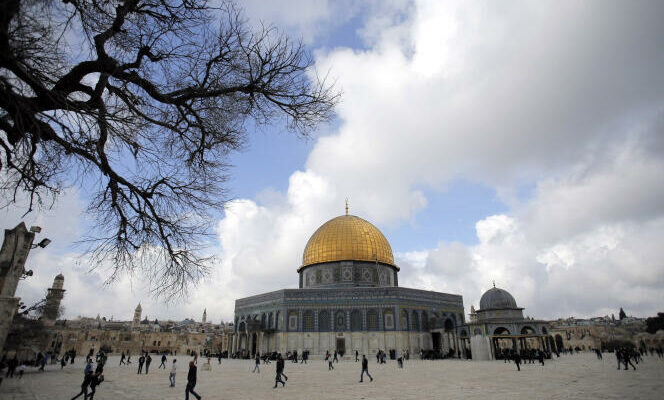Yishaï Sarid, undoubtedly the most inventive Israeli novelist of his generation, published in 2015 The Third Templea “biblical anticipation” book based on hundreds of hours of interviews with activists of the messianic movement, mainly from West Bank settlements. Twenty years after the assassination of Labor Prime Minister Yitzhak Rabin by a fanatic from this same movement, Yishai Sarid decided to take very seriously, literally literally, the eschatological speeches of these “end of times” activists. “.
The novel, crowned by the prestigious Bernstein Prize, follows the narrator, whose father “ removed the mosques from the summit of Mount » to build the Third Temple in their place. The echo of this dystopia resonates today, while Benjamin Netanyahu has promoted two supremacists to key portfolios, Bezalel Smotrich to finance (as well as deputy minister for defense) and Itamar Ben Gvir to national security (with authority over a future “national guard”).
The Temple of Jerusalem was destroyed for the first time in 586 BCE by the Babylonians, who took the Jewish population into exile. Half a century later, the Persian Emperor Cyrus authorized the return of the exiles and the reconstruction of the Temple. This Second Temple was itself destroyed in 70, during Rome’s repression of a Jewish uprising. According to the Hebrew calendar, the destruction of these two temples occurred each time on the 9th of the month of Av, marked every year since by a day of fasting.
The Temple and its mount
The commemoration of the two disappeared temples gave an essential place in Jewish piety to the “wall”, in Hebrew the Kotel, which corresponds to the western enclosure of the Second Temple, hence its name “Western Wall” or “wall of Lamentations.” This Kotel is all the more central as the rabbinical consensus prohibits access to the Esplanade des Mosques, the third holiest site in Islam, after Mecca and Medina, with the Al-Aqsa mosque, cited in the Koran, and the Mosque of Omar, or Dome of the Rock.
This esplanade of Mosques is called in Arabic Al-Haram al-Sharif (“noble sanctuary”) and in English Temple Mount (“Temple Mount”). During the battle for Jerusalem in July 1948, two months after the proclamation of the State of Israel, the extremist Lehi militia tried in vain to approach the sanctuary to blow up the two mosques.
The ceasefire of April 1949 divided the Holy City between a western sector, incorporated by Israel, and an eastern sector, annexed by Jordan, where the synagogues were destroyed. After the Israeli triumph in the Six-Day War, in June 1967, Moshe Dayan, Minister of Defense, forbade the rabbi of the armies, Shlomo Goren, from destroying the Omar Mosque in the perspective of the Third Temple. On the other hand, the Maghreb district, which had extended for centuries at the foot of the Kotel, was demolished in a few hours. A new status quo of the holy places was then imposed by the Israeli occupier in East Jerusalem, the Western Wall, with access cleared by force, being reserved for Jewish worship, while the Esplanade des Mosques was dedicated to worship. Muslim, tourists being admitted at specific times and through specific access.
You have 50% of this article left to read. The rest is reserved for subscribers.
